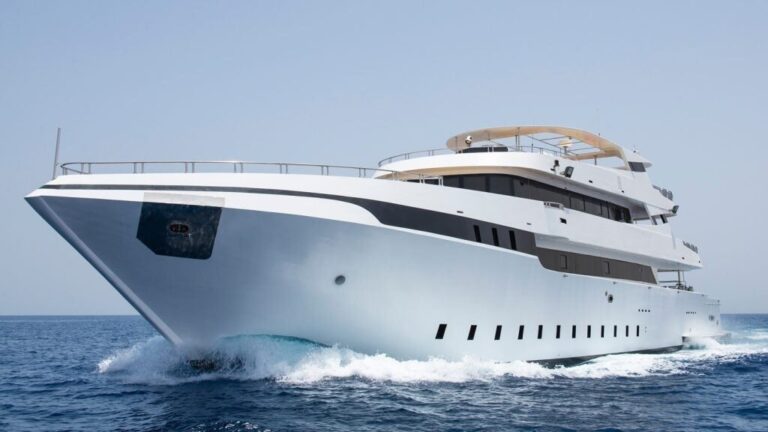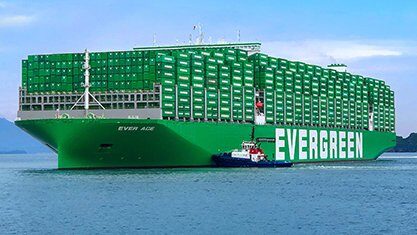

The Greek fleet of all types and sizes of vessels went up by 85 vessels in 2023. Overall, the increase in DWT of all vessels and all types was 9.7m DWT.
Vessels over 20,000 tons DWT went up by 112 units comprising of 9m DWT. They are also run by 411 companies, which is 9 companies more than the previous year. The Dry bulk fleet gained 92 units or 10.9m DWT, a significant increase of 5% compared to the previous year.
Containers grew by 6.2% in DWT terms, representing an addition of 28 units. A marked difference to the addition of 2 units in 2022.
An interesting development was the reduction of the tanker fleet by 45 vessels, an annual change of 3.4% downwards in DWT terms. Despite this reduction, age hardly went up. The companies that ran them went down by 4.
The LNG fleet grew by 14.6% in DWT terms, by far the biggest percentage growth in a sector. There were 20 vessels added to the fleet and their age rose by 10.2%, showing an increasing demand in the sector irrespective of age. It is noteworthy that there are no new entrants in the sector.
There were 11 Large LPGs added to the fleet, representing an 11.5% yoy increase in DWT terms. This sector was increased by 5 more companies.
The Greek fleet continues to be the largest fleet worldwide, followed by China and Japan.
For the second year running the number of Greek shipping companies fell by 7. Traditionally, the backbone of Greek shipping has been the small owners. Although the number for the very small owners (1-2 vessels) has indeed gone down, we must observe the increase of the order of 8.41% in their fleet DWT. At the other end of the scale, the 25+ vessel fleets remain fairly stable in their number and show a 2.5% increase in DWT terms. Overall, in 2023 the fleet exhibits again the dynamism that is associated with it.
It is noteworthy that in the top tier of owners (Top 30, Top 50 and Top 70) the market share remains almost the same over the last few years.
The Greek fleet is continuing to grow and is expected to accelerate as the number of newbuilding orders have increased lately using conventional but eco Tier III technology. As the orders have been placed by large companies and the price of second hand vessels has risen substantially, we anticipate a further reduction in the number and importance of the smaller size companies.
An interesting development of the current Greek fleet S&P activity, is that the sales are more than purchases in the last two years even though the fleet has grown. This partly signifies a reshuffle of ownership within the Greek fleet as well as an appetite for younger second hand tonnage. Also, committed contracts have been resold and a number of orders may not have entered the Greek fleet yet. In addition, it may be because newbuilding orders have not been recorded to the extent that they have been discussed in the international press.
Furthermore, shipyard slots are overbooked and newbuilding delivery dates are pushed back. Their own orders are being sold at a profit. Slots are preferentially booked with containers and more expensive vessel / fuel types. Despite the growth, Greek deliveries have been going down for the last couple of years. The orderbook has not shown massive fluctuations right up to the end of 2023 but spikes significantly in the first half of 2024. In fact, the Greek orderbook jumped in mid 2024 by 78% to 43.01m DWT from only 24.23m DWT for the whole of 2023.
Admittedly all vessel sectors showed rise in numbers and DWT with LNGs and LPGs showing the biggest growth at 14.6% and 11.5% respectively, except tankers. This sector declined significantly for the first time in at least ten years. Tanker sales were up by 18% as opposed to purchases that collapsed by 58% in 2023 in DWT terms.
However, during the first six months of 2024, this trend was reversed in line with the total Greek fleet orderbook increase. As seen in the graph below, 2023 was a year of contemplation for tankers with only 18% share of the orderbook compared to an impressive 51% the previous year. 2024 began with a slightly stronger resolve towards tanker acquisition.
Regarding deliveries, in 2023, there were 18 tanker vessels delivered compared to 48 in 2022. Only 3 were delivered, thus far, in 2024. However, given the emerging picture of tanker orders and deliveries above, we could assume that this uncertainty stems partly from the type of future fuel ambivalence, as much for the running of the vessel as for the carrying of crude, which is faced with the net zero approaching deadlines.
Looking into the Greek fleet according to Clarkson’s, currently only 6.7% are alternative fuel capable vessels. The orders, however, are nearly 50% of the current orderbook. Most significantly, nearly 30% of the eco orderbook is held by tankers, followed by Bulk carriers, LNG, Containers and then LPG. Greek owners still hold the first place in terms of alternative fuel orders followed by China and Japan.
Source: Petrofin Research



